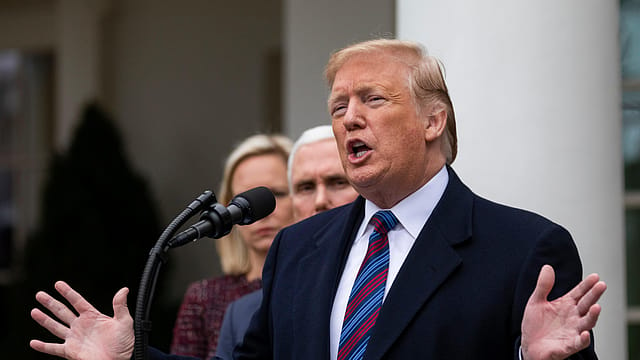Donald Trump’s tariff offensive complicates Fed’s inflation fight
ADVERTISEMENT

Federal Reserve Governor Lisa D. Cook has raised the alarm on fresh inflationary pressures stemming from President Donald Trump’s renewed tariff offensive, warning that the central bank’s 2% inflation target may now be harder to reach—and suggesting that interest rates may stay higher for longer, or even rise further.
Speaking at the McKay Lecture at the University of Pittsburgh, Cook said recent data show inflation remains elevated, with signs that tariffs are already pushing up prices of core goods such as cars, steel, and aluminum—inputs that ripple through broader sectors.
“Tariff increases typically result in an increase in the level of prices for the affected goods,” Cook noted. “I am carefully watching various channels through which tariff effects could have more widespread implications for prices.”
Tariffs on key industrial inputs such as steel and aluminum are already filtering through the manufacturing ecosystem, gradually pushing up costs across multiple sectors. In industries such as automobiles, both direct duties on vehicles and the cumulative impact of higher input costs could drive up prices for new cars, said Cook. This, in turn, is expected to spill over into the used-car market and related services—ranging from rentals and insurance to repairs—mirroring price dynamics seen in recent years.
December 2025
The annual Fortune 500 India list, the definitive compendium of corporate performance, is out. This year, the cumulative revenue of the Fortune 500 India companies has breached $2 trillion for the first time. Plus, find out which are the Best B-schools in India.
She pointed to a worrying uptick in short-term and long-term inflation expectations, citing consumer surveys and business commentary. “Many respondents mentioned tariffs as the reason for the rise,” she said, adding that companies have already indicated they plan to pass on higher costs to consumers.
Cook noted that the economy is beginning to feel the effects of cuts to federal jobs and funding, with federal employees, contractors, and universities among those impacted. She indicated that while layoffs have so far been limited, the broader sense of uncertainty has started to weigh on household confidence and could dampen consumer demand.
She pointed to data showing that personal consumption spending weakened in the first two months of the year. While part of that may reflect seasonal weather patterns, she suggested consumers now appear to have thinner financial buffers and a more cautious view of their job and income prospects compared to previous years.
Cook also cited growing concern among businesses, which she said are increasingly referencing trade policy uncertainty in their outlooks and earnings calls. This uncertainty, she added, is affecting hiring and investment plans. Industries such as construction, agriculture, elder care, and food services, she noted, are particularly worried about labour supply constraints stemming from slower immigration.
While the Fed had previously shifted to a more dovish tone, cutting rates by a full percentage point last year, Cook’s remarks reflect a pivot toward caution in the face of fiscal and trade headwinds. “I believe it will be appropriate to maintain the policy rate at its current level,” she said, but also warned: “If [expectations] were to rise substantially, it may become more difficult to keep actual inflation on a path back toward our 2 percent goal.”
With business confidence weakening and consumer spending slowing—partly due to higher uncertainty and job-market anxiety—Cook stressed that the economy is in a “period of uncertainty” that complicates monetary policy.
Her comments suggest the Fed may be forced to sit tight—or even consider a rate hike—if tariffs continue to stoke inflation. In short, Trump’s tariff offensive is not just a trade story, it’s fast turning into a monetary policy problem.
